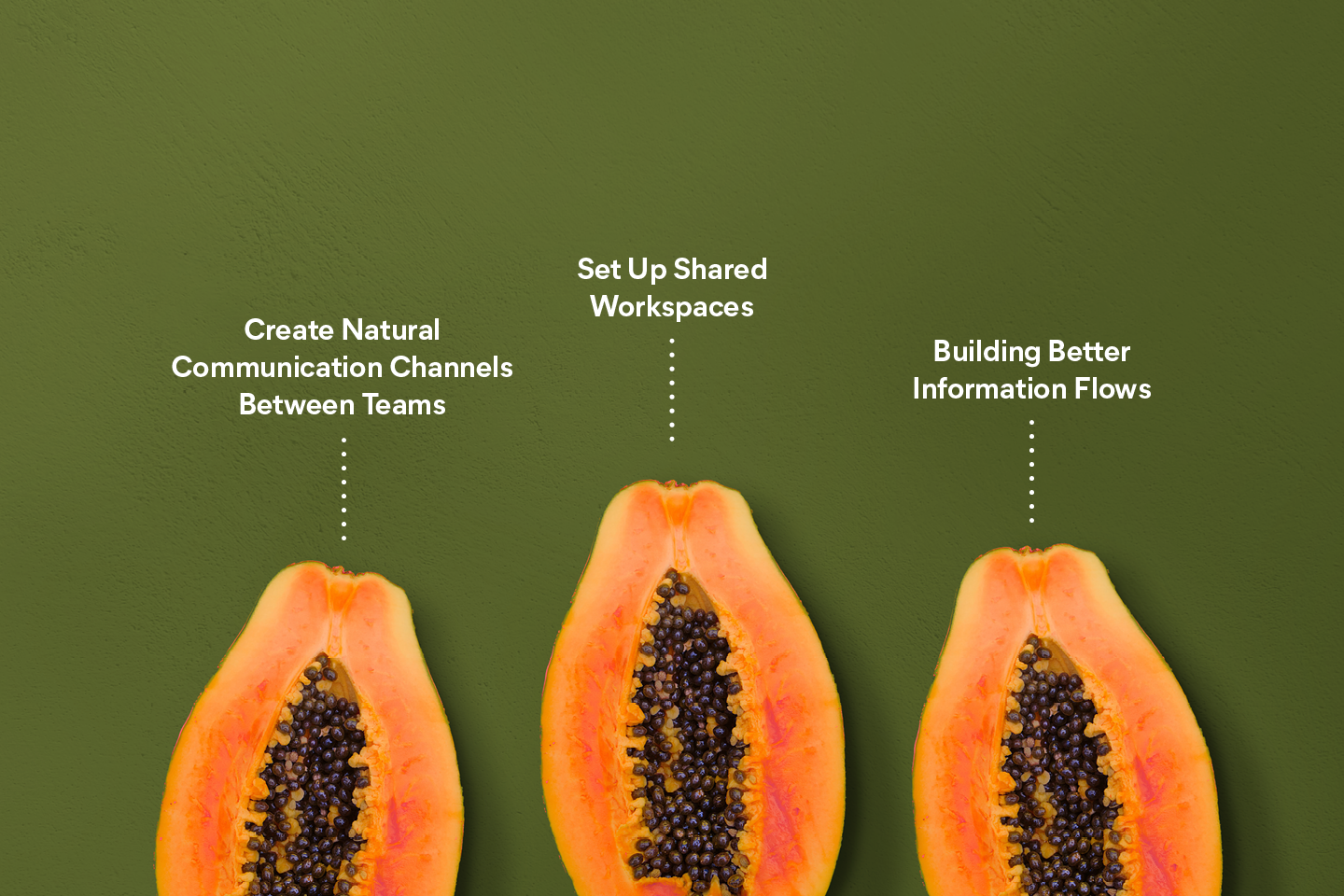
Why You Need to Rethink Team Silos
Often, when we talk about team silos, it’s in the context of breaking them down to improve communication across an organization. But what if we’re looking at it wrong?
After all, the problem with silos is rarely with the capability of individual teams and departments. It’s with the communication between them.
As a result, when we attempt to break down silos to encourage cross-functional collaboration and communication, we end up with underperforming groups that have conflicting priorities and no standardized workflow.
That doesn’t mean that working in silos is ideal, though. Research has shown that there are a lot of clear benefits to collaborative processes and teams. But rather than breaking down the silos in our organizations that enable us to capitalize on the knowledge and skills of departmental experts, perhaps we should start looking for opportunities to build connections and foster communication between them.
Before we get into that, though, let’s make sure we’re on the same page.
What is a Team Silo?
Silos occur when the communication between teams and departments hits a hard stop. This happens when people – usually management – refuse to share information and assets with other groups in your organization.
As a result of this silo thinking, teams and departments become hyper focused on their own tasks, communicating almost exclusively with people who share their job functions. And their work becomes an end unto itself.
While this may seem bad enough already, the real problem with silos, and the silo mentality that creates them, is the results that follow. Resources, time and energy are wasted. Tasks that could be done once and done well are completed a number of times on a mediocre level. Trust is shaken and conflict arises between teams. And organizational efficiency takes a hit.
So What Do You Do With Your Team Silos?
It may seem intuitive to simply break them down, by either dissolving a team or creating new cross-functional teams. However, doing so can set your company back, as it also destroys well-oiled processes and established collaboration patterns.
So, how do you deal with the silos in your organization?

Simple. Look for ways to unite and form communication channels between them. Here are 4 things you can do to promote collaboration across your organization without upsetting the operations of individual teams and departments:
Create Natural Communication Channels Between Teams
When teams occupy separate physical spaces and use different communication tools, interactions between them can be few and far between. This can create a rigid barrier to good communication.
But thankfully, there are a lot of different ways you can remedy this. For instance, you can adopt new communication tools – like instant messaging apps – that make it easy for people to communicate both within their silos and cross-functionally. You can also integrate a shared project management tool into your approval workflow to organize tasks and track project completion. You can even set up water cooler opportunities, to get people talking and interacting on their own terms.
Creating these communication channels doesn’t have to be formulaic, though. The point is to create natural opportunities for people to interact and share information. So, do what works for your people and your business. The more organic and comfortable these channels are, the more naturally conversations will occur.
Set Up Shared Workspaces
For collaboration to be successful, you need to have a space where people can coproduce content, designs, and campaigns. They allow you to work around physical barriers to collaboration – like geographic locations, office layouts, and time zones.
On the flip side, not having a designated space for people to collaborate and share data can lead to a lot of different problems. For one, you can have multiple versions of a project saved in a given folder, but have no idea which version is the most accurate. You can also end up with finished projects that are less than they could be, because your teams didn’t have access to all the information they needed.
Setting up a shared workspace is a lot easier than it might seem, though. All it takes is the right online tool. Frontify is a great option for most companies, because it gives you digital space to share information and collaborate on brand related projects, regardless of your job function. It also saves and stores your projects’ most current iterations and annotations in the cloud, so you can access it later.
Building Better Information Flows
One of the most important things you can do to facilitate collaboration across your organization is be transparent. Lack of transparency leads to a loss of trust, which can make teams more hesitant to share data. But when information is easily accessible and openly shared, your employees’ confidence grows and over time they become less tight fisted about their own data.
There are a few different things you can do to be transparent. You can make company information easily accessible to your employees and encourage them to stay in the loop. You can also build information flows across your business, by helping each team create a strategy for sharing information.
This could be sending monthly or quarterly newsletters. It could be making process documentation accessible to the company. It could even be using a shared communication channel. The solution you choose doesn’t matter as much as getting a plan in place, so brainstorm and find something that your teams can stick to.
Conclusion:
The reality is, you don’t get people to collaborate successfully, by forcing teams to disperse and work in new installations. But, by creating opportunities for people to collaborate and share information naturally, you can help your silos work seamlessly together. As a result, you’ll be able to capitalize on the specialized knowledge and skills of individual departments and reap the rewards of a collaborative culture.

